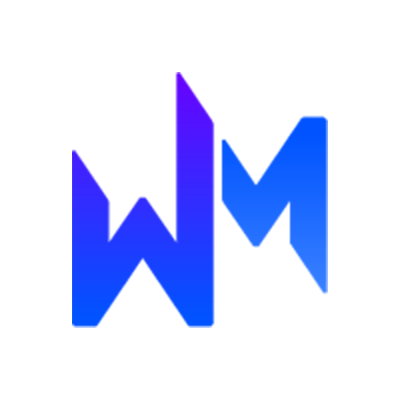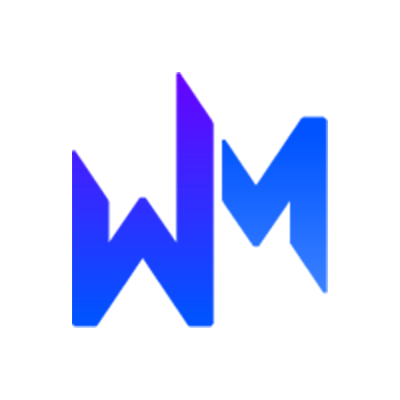3 Creative Digital Ads Sure to Impress

By Amberly Dressler, Managing Editor
Digital marketers have their work cut out for them when it comes to creating compelling, personalized ads that drive clicks - and conversions - on the various channels consumers frequent.
Marketers are, however, up for the challenge. According to IAB's Internet Advertising Revenue Report released in Oct. 2014, Internet ad spending climbed to a historic high of $23 billion for the first half of this year, marking an impressive 15 percent rise over 2013's first-half ad revenues.
To ensure a return on their investment, brands must know which ads are currently catching the attention of today's modern - and often distracted - online consumer. Here are three such ads.
SOCIAL SHARING & The Blacklist
People's attention spans are rapidly decreasing. In 2000, a brand could likely get 12 interrupted seconds of a user's time, now they are lucky to get 8 (source: wsm.co/esnacks). To put that in perspective, the average attention span of a goldfish is 9 seconds. This is one of the many reasons TV and social media work so well together - particularly for online advertisers. TV watchers are not giving their undivided attention to what is on the "first screen" and instead are following their favorite shows on the various social networks - sharing content and connecting with fellow fans before, during and after a program. This, according to Nielsen, is presenting a valuable opportunity for advertisers interested in tapping into and leveraging the momentum of social conversations.
Understanding the impact of social sharing, NBC turned to Sizmek, an ad serving platform for agencies, advertisers and publishers, to promote its second season of the television series "The Blacklist" with an ad unit that was not only featured in a "homepage takeover" on nytimes.com (see Image A), but also advertised in Facebook's newsfeed and shared by social users (see Image B).
By including a social sharing call-to-action in the banner ad, Sizmek's SocialFire technology aggregates a post for social media once clicked, which helps users initiate conversations about their favorite shows from publisher sites to their social newsfeeds - increasing the ad's reach and overall brand awareness. Most importantly, the social media posts that are automatically being created for users essentially shift the original ad from paid media to earned media (in this case, organic social posts), which resonates better with digital consumers, as it is seen as more authentic.
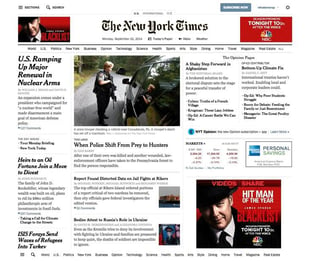
A. NBC's "shareable" ads for its show "The Blacklist" were featured in a homepage takeover on NYTimes.com.
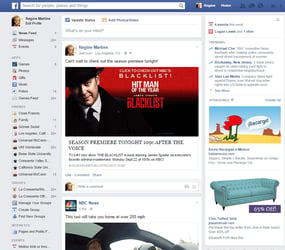
B. With a social sharing call-to-action included in the advertisement, users can initiate social conversations about their favorite shows from publisher sites to their social newsfeeds.
The CONTENT JOURNEY & Sauza Tequila
NBC is not alone when it comes to looking for innovative ways to drive brand engagement and loyalty. Targeting a female audience over the age of 21, Sauza Tequila enlisted the help of mobile media company Zumobi, Starcom MediaVest Group, Microsoft and Beam, Inc., to provide a fun new way for women with a proclivity for popular culture and social media to plan their next social gathering.
The result was the Sauza Party Planner, which takes tech-savvy party enthusiasts on a Sauza Tequila content journey. An in-app auto-expanding banner ad, which saw a 5 percent click-through rate, sets up the experience (see Image C). Once clicked, users are required to enter a birthdate (to pass the "age gate") and are then taken to a branded, visually appealing quiz (or they can tab straight through to branded drink recipes) that gives them a tailored result set within a group of four categories (décor, food, drinks, music), plus one custom category. The types of questions users are asked in order to personalize their results range from, "What kind of cocktail or drink would you like to serve?" to "If I could describe my group of girlfriends in one word it would be:".
Marla Schimke, VP of marketing at Zumobi, believes this type of experience - where people engage with a branded module on a content page that sets up the experience (e.g. "Plan Your Girls Night") - serves as a best practices guide for brands wanting to utilize mobile to increase brand affinity and user engagement. What's more, the content marketing experience's 74 percent return rate serves as proof that consumers enjoyed the ad experience enough to re-engage with it. Zumobi's "Content Hub" feature helped encourage users to return to the content, as it could be saved on their mobile home screen for continued use and social sharing.
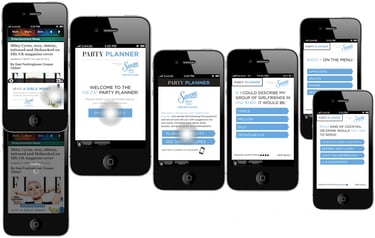
C. From an in-app banner ad to an interactive quiz, the Sauza Party Planner took users on a content journey.
RETARGETING & The Home Depot
If there's one common denominator in effective, engaging advertising today, it's social - whether it's the ability to share an experience on social media or delivering ads within users' newsfeeds. In fact, Facebook's newsfeed supplies some of the most valuable ad real estate online, according to retargeting platform AdRoll, which reports that newsfeed campaigns become even more effective - driving key metrics like conversions, app downloads and lead generation - when layered on top of Web retargeting (5.7 percent more impressions and 53 percent more clicks). For the unfamiliar, retargeting essentially "brings back" website visitors who went to a site, looked around and left without buying anything.
Take The Home Depot as an example. It retargets on Facebook (see Image D) by not only including the image of what the shopper was looking at (but didn't buy) on its website, but also a product description. Its calls-to-action "Like Page" and "Shop Now" give the buyer multiple opportunities to engage with The Home Depot, further increasing brand engagement and the likeliness of conversion.
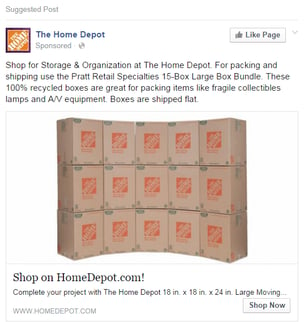
D. The Home Depot retargets site abandoners on Facebook, encouraging them to either Like their page or to Shop Now.
Impressive, Yet Doable
As Internet ad revenues soar, competitors' ads will only get more engaging, more personalized and more in-touch with what consumers will spend their valuable time on. The time is now when it comes to looking into what platforms, agencies, practices and the like can propel a digital enterprise's acquisition and retention efforts forward.



